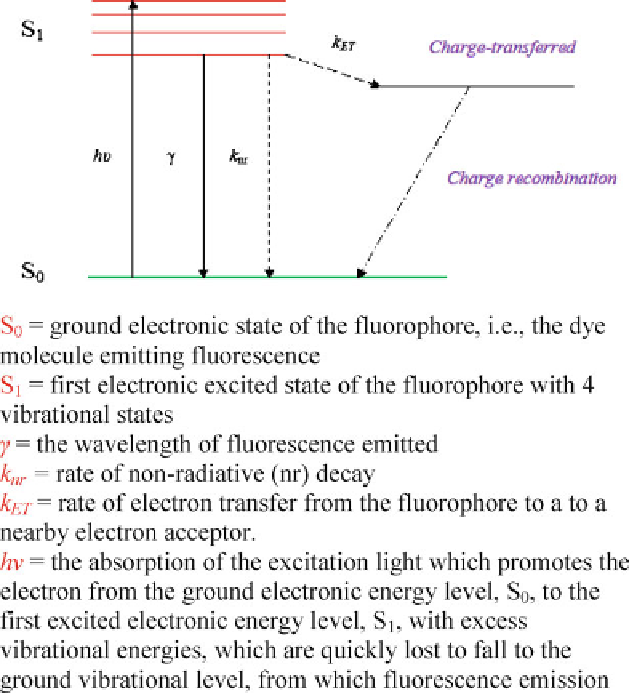Biology Reference
In-Depth Information
Fig. 11.16 The diagram showing the submolecular processes underlying photon-molecule
interactions
site of the enzyme contains one FAD molecule, which is fluorescent in its oxidized
form. FAD is reduced by a cholesterol molecule to FADH
2
, which is then oxidized
back to FAD by molecular oxygen (Fig.
11.17
). The fluorescence of FAD is turned
on and off (giving rise to the so-called blinking phenomenon) as the redox state of
the FAD undergoes transitions between the oxidized and reduced states, each on-off
cycle corresponding to one turnover of the enzyme.
The electronically excited state S
1
in Fig.
11.16
can decay back to the ground
state S
0
through three different mechanisms:
1. The radiative pathway (i.e., the
g
step)
2. The nonradiative (nr) pathway (i.e., the
k
nr
step)
3. The electron transfer (ET) pathway (i.e., the
k
ET
step)

